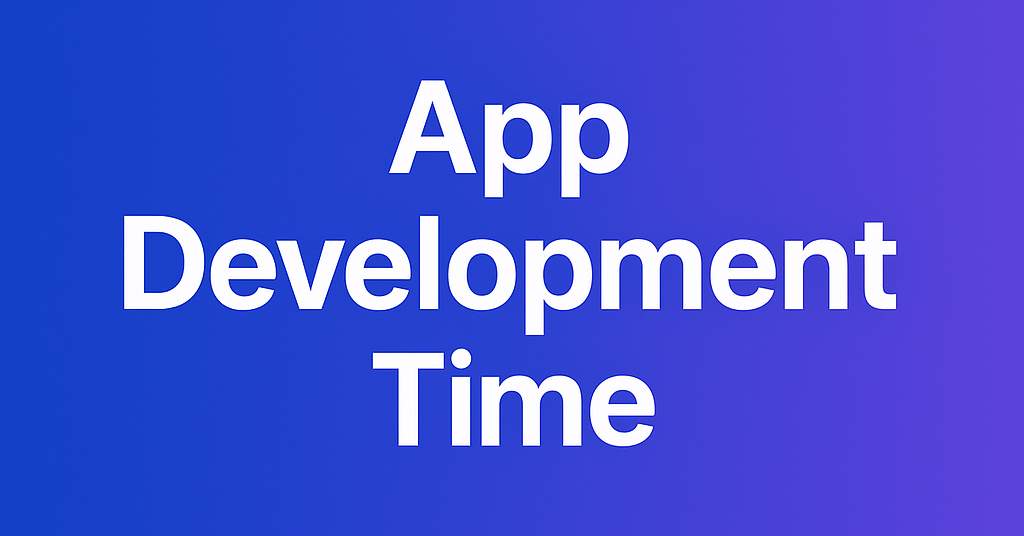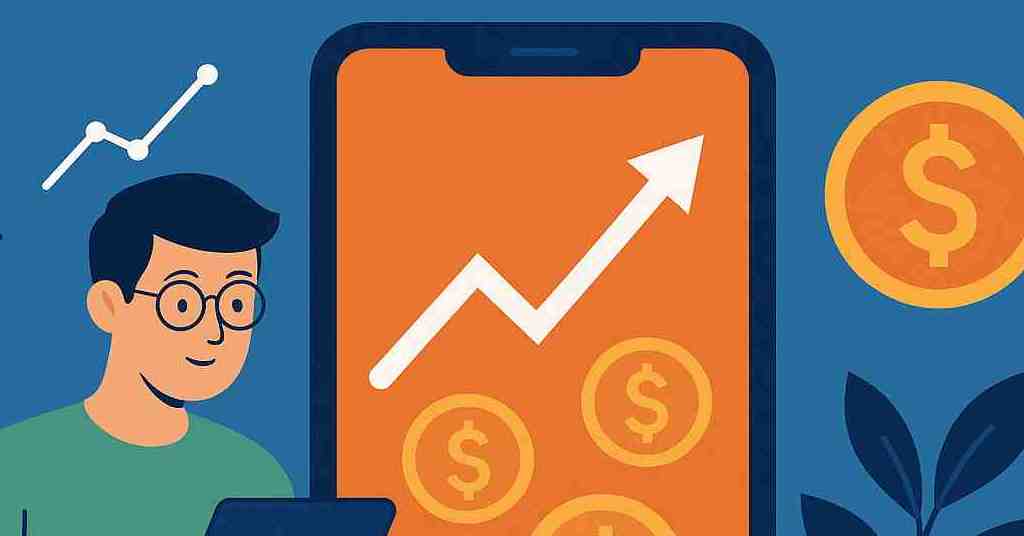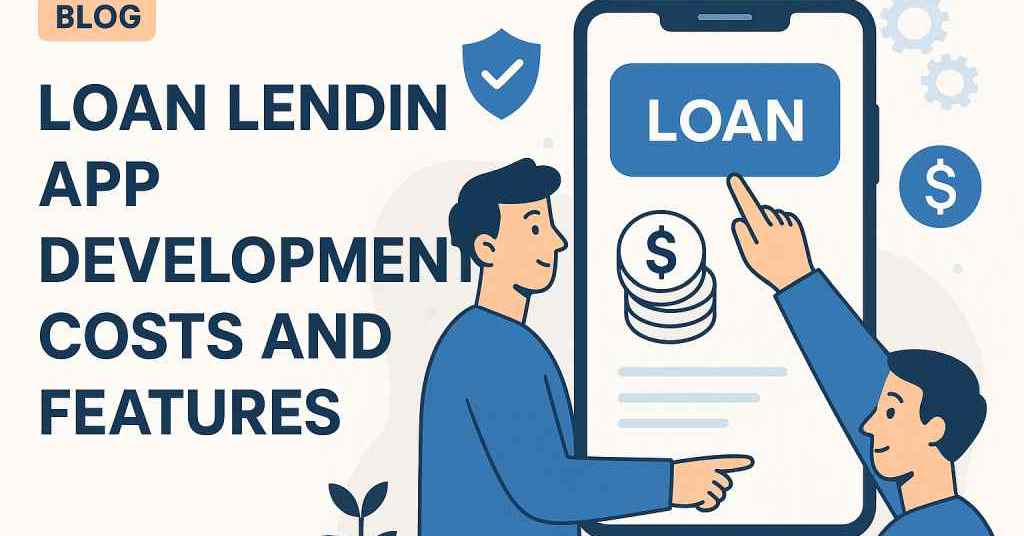
App Development Time
How long does it take to develop a mobile app?
The truth is, there’s no one-size-fits-all answer. The time required can range from 3 months for a basic app to over a year for a complex one.
If you’re aiming for a Minimum Viable Product (MVP) with essential features, you might be looking at 3 to 6 months.
But if you want a full-fledged app with advanced features, the timeline stretches to 9-12 months or more.
Why does it take so long?
Because mobile app development isn't just about writing code.
It involves planning, UI/UX design, backend setup, testing, and deployment—each stage contributing to the total time.
And let’s be real—cutting corners only leads to issues down the road.
So, how long should it take to develop an app like yours? What hidden factors can slow things down? And how can you speed up the process without sacrificing quality?
Let's break it all down.
How Long Does It Take To Develop A Mobile App?
There’s no single answer to this—it depends on what kind of app you’re building.
A basic app with minimal features could take 3-4 months, while a complex, feature-rich app could require 9-12 months or more.
The timeline isn’t just about writing code; it includes planning, designing, testing, and launching—each step playing a crucial role in the final product.
Here’s a quick breakdown of how long each stage takes:
|
Development Stage |
Estimated Time |
|
Idea & Planning |
2 - 4 weeks |
|
UI/UX Design |
4 - 8 weeks |
|
App Development |
3 - 6 months (MVP) / 6 - 12+ months (Full app) |
|
Testing & QA |
3 - 8 weeks |
|
Deployment & Launch |
1 - 2 weeks |
If you’re in a rush, you might wonder—can this process be sped up?
The short answer is yes, but it depends on multiple factors.
Next, let's explore what really impacts development time and how each factor can extend—or reduce—the timeline.
It Depends (On A Lot of Factors)
There’s no fixed timeline for mobile app development because so many factors come into play.
A simple app can be ready in a few months, while a feature-rich, high-performance app might take a year or more.
The key things that impact development time include complexity, features, platform choice, development method, team size, integrations, and testing.
Some of these factors are obvious, while others can sneak up and extend your timeline unexpectedly.
Let’s go through them in detail.
1. App Complexity – The Biggest Factor
The complexity of your app directly affects development time.
A simple calculator app won’t take nearly as long as a social media app with AI-powered recommendations and live video streaming.
|
Complexity Level |
Examples |
Common Features |
Estimated Development Time |
|
Basic App |
To-do list, calculator, flashlight app |
Simple UI, single function, no login |
3 - 4 months |
|
Moderate App |
Food delivery, fitness tracker, e-commerce app |
User authentication, database, payment gateway, push notifications, API integration |
6 - 9 months |
|
Advanced App |
Social media, banking apps, AI-driven assistants |
Real-time chat, video calls, AI-powered recommendations, cloud storage, AR/VR, multi-device sync, security encryption |
9 - 12+ months |
A basic app is quick because it only does one thing.
Whereas, a moderate app takes longer due to the need for user management, data handling, and security.
But an advanced app?
That’s where things get serious—features like real-time updates, AI, and cloud sync drastically increase development time.
2. Features & Functionality – The More You Add, The Longer It Takes
Some features are quick to implement, while others can add months to development.
Even a single additional feature can cause unexpected delays if it requires backend development, API integration, or heavy testing.
|
Feature |
What It Involves |
Estimated Time Impact |
|
User Authentication |
Sign-up via email, phone, or social media, password reset |
3 - 5 weeks |
|
Push Notifications |
Custom alerts, scheduled notifications, user preferences |
2 - 3 weeks |
|
Payment Gateway |
Integrating Stripe, PayPal, Apple Pay, Google Pay |
4 - 6 weeks |
|
Chat System |
Direct messaging, group chats, message storage |
6 - 8 weeks |
|
AI Integration |
Chatbots, recommendation engines, predictive analytics |
8 - 12 weeks |
|
AR/VR Features |
Augmented reality filters, VR-based interactions |
10 - 14 weeks |
|
Real-Time Tracking |
GPS, live updates, estimated arrival times |
6 - 9 weeks |
|
Offline Mode |
Storing data locally, syncing when online |
5 - 7 weeks |
|
Cloud Sync |
Multi-device data sharing via cloud storage |
7 - 10 weeks |
|
Video Streaming |
Live or on-demand video playback with smooth performance |
10 - 16 weeks |
If you need a highly interactive app, development time can easily double.
A simple push notification system might take just a few weeks, but integrating AI, AR, or live video can take months.
3. Platform Choice (iOS, Android, or Both?)
Choosing whether to develop for iOS, Android, or both also impacts your timeline.
|
Platform |
Pros |
Cons |
Time Estimate |
|
iOS Only |
Faster development, fewer devices to optimize for |
Limited audience (Apple users only) |
4 - 6 months |
|
Android Only |
Wider reach, flexible customization |
More devices = longer testing time |
4 - 6 months |
|
Both (Native Development) |
Best performance, full functionality |
Requires two separate development processes |
6 - 9 months |
|
Cross-Platform (Flutter/React Native) |
Faster development, single codebase |
Slightly lower performance than native apps |
4 - 7 months |
Native development means separate codebases for iOS and Android, which doubles work. Cross-platform development saves time but may lack native features.
4. Development Approach – How You Build It Matters
Different development methods can significantly affect your timeline.
|
Development Method |
Pros |
Cons |
Time Impact |
|
Native (Swift/Kotlin) |
Best performance, best UI |
Takes longer, higher cost |
Slowest |
|
Cross-Platform (Flutter/React Native) |
Faster, single codebase for both platforms |
Might lack some native functionality |
Moderate |
|
Low-Code/No-Code |
Super fast, affordable |
Limited customization, not for complex apps |
Fastest |
Native development takes longer but ensures high performance.
Cross-platform frameworks save time, but some features require extra effort.
Low-code platforms are the fastest, but they lack flexibility for complex apps.
5. Team Size & Expertise – More People, Faster Delivery?
The size and experience of your team can speed up or slow down development.
|
Team Type |
Speed |
Best For |
|
Freelancers (1-2 developers) |
Slowest |
Startups, small-scale projects |
|
In-House Team (5-10 people) |
Moderate |
Mid-sized businesses |
|
Experienced Agency (Full team) |
Fastest |
Large-scale, enterprise apps |
A small team means slower development, while an experienced agency can work faster due to specialized teams handling different aspects simultaneously.
6. Third-Party Integrations – Extra Time for Extra Features
Adding external services means dealing with API setups, testing, and debugging.
|
Integration Type |
Estimated Time |
|
Payment Gateway (Stripe, PayPal) |
3 - 6 weeks |
|
Social Media Login (Facebook, Google, Apple ID) |
2 - 4 weeks |
|
Maps & Geolocation (Google Maps, Mapbox) |
3 - 5 weeks |
|
CRM Integration (HubSpot, Salesforce) |
4 - 6 weeks |
Each integration brings potential complications, bugs, and additional testing—which can push the timeline further.
7. Testing & Bug Fixing – Skipping This Can Cost You Later
Testing isn’t something you can rush.
A buggy app can kill your reputation instantly.
|
Testing Type |
Time Required |
|
Manual Testing |
3 - 6 weeks |
|
Automated Testing |
2 - 4 weeks |
|
Beta Testing (Real Users) |
4 - 8 weeks |
Skipping testing might save time upfront, but it leads to delays later when bugs start piling up.
Each of these factors directly impacts your timeline.
Even small delays in one stage can snowball into bigger delays in the overall project.
But beyond these, there are hidden factors that can unexpectedly extend development time.
Hidden Factors That Affect Development Time
Even with a well-planned timeline, unexpected delays can creep in.
These hidden factors often go unnoticed until they start adding weeks—or even months—to your development schedule.
Here’s what you need to these hidden factors that might affect time to develop an app:
1. Scope Creep – The Silent Timeline Killer
Scope creep happens when new features get added mid-development.
A simple app can turn into a complex one when stakeholders decide to include extra functionalities.
|
Scope Creep Example |
Time Impact |
|
Adding a chat feature after development starts |
+ 6 - 8 weeks |
|
Switching from basic UI to high-end animations |
+ 4 - 6 weeks |
|
Moving from a simple payment gateway to multiple options |
+ 3 - 5 weeks |
|
Expanding app to a second platform (iOS + Android) |
+ 4 - 7 months |
💡 How to avoid it? Define a clear feature list before development begins and stick to it.
2. Unclear Requirements & Frequent Changes
Vague ideas or frequent changes can lead to endless revisions and delays.
If developers don’t have a clear roadmap, they’ll waste time guessing instead of coding.
|
Issue |
Time Lost |
|
Unclear project scope |
+ 2 - 4 weeks |
|
Constantly changing UI/UX design |
+ 4 - 6 weeks |
|
Shifting business model mid-development |
+ 6 - 12 weeks |
💡 Solution? Have a well-documented project brief and involve developers in planning discussions.
3. Third-Party Services & API Delays
Many apps rely on third-party APIs (Google Maps, Stripe, Firebase, etc.), but these services can cause unexpected delays.
|
Third-Party Dependency |
Possible Issues |
Time Impact |
|
Payment gateways (Stripe, PayPal) |
Compliance issues, API changes |
+ 3 - 6 weeks |
|
Social logins (Google, Facebook) |
Authentication bugs |
+ 2 - 4 weeks |
|
Cloud storage (AWS, Firebase) |
Slow server response |
+ 4 - 6 weeks |
|
AI & machine learning APIs |
High integration complexity |
+ 6 - 10 weeks |
💡 How to handle it? Choose reliable APIs and keep a backup plan in case of delays.
4. Approval & Compliance Delays
If your app requires legal approvals, compliance checks, or App Store reviews, expect extra waiting time.
|
Approval Type |
Time Delay |
|
App Store Review (iOS) |
1 - 2 weeks |
|
Google Play Store Review |
3 - 7 days |
|
GDPR / HIPAA Compliance (for data-sensitive apps) |
4 - 8 weeks |
|
Banking & Finance Regulations (KYC, PCI-DSS, etc.) |
8 - 12 weeks |
💡 Solution? Plan for extra approval time in your project timeline.
5. Bugs & Technical Challenges
No app is bug-free on the first attempt. Fixing technical issues can slow down your release.
|
Common Technical Issues |
Time Impact |
|
Unstable third-party APIs |
+ 3 - 5 weeks |
|
Compatibility issues across devices |
+ 4 - 6 weeks |
|
Security vulnerabilities |
+ 6 - 8 weeks |
|
Data migration problems |
+ 4 - 10 weeks |
💡 How to minimize delays? Test early and frequently instead of waiting until the final stage.
6. Poor Communication Between Teams
Lack of coordination between designers, developers, and testers can create bottlenecks.
|
Communication Issue |
Time Lost |
|
No clear handoff between UI/UX and development |
+ 2 - 4 weeks |
|
Developers waiting on API documentation |
+ 3 - 5 weeks |
|
No proper bug reporting process |
+ 4 - 6 weeks |
💡 Fix? Use project management tools like Jira, Trello, or Slack for smoother collaboration.
7. Unexpected Business Decisions
Sometimes, the biggest delays aren’t technical but business-related.
|
Business Decision |
Time Impact |
|
Pausing development due to budget issues |
Indefinite |
|
Pivoting to a new target audience |
+ 3 - 6 months |
|
Rebranding (changing name, UI, features) |
+ 4 - 8 weeks |
💡 How to avoid this? Have a clear strategy and budget before starting development.
So, What’s the Solution?
Even if you plan everything perfectly, unexpected delays are always possible. However, you can reduce risks by:
✔️ Defining a clear feature set before development starts
✔️ Avoiding last-minute changes & scope creep
✔️ Choosing stable third-party services & APIs
✔️ Testing continuously instead of at the last moment
✔️ Communicating effectively across all teams
✔️ Accounting for approvals & compliance delays upfront
The good news?
Even if hidden factors affect your timeline, there are still ways to speed things up.
Popular Mobile Apps & Time Taken to Clone Them
Want to build the next Uber, Instagram, or Airbnb? Cloning popular apps isn't as easy as it sounds.
While you might not need to reinvent everything from scratch, creating a feature-rich, scalable, and secure version takes significant time and effort.
Below is a table showcasing how long it would take to build a clone of some of the most popular apps, along with their key features and estimated costs.
|
App Name |
Key Features |
Development Time |
Estimated Cost ($) |
|
|
Photo/video sharing, Stories, Live streaming, Messaging, Push notifications, Filters |
9 - 12 months |
$80,000 - $200,000 |
|
Uber |
Real-time tracking, GPS navigation, Ride scheduling, Fare calculation, Payment gateway, Driver & user profiles |
9 - 14 months |
$100,000 - $250,000 |
|
TikTok |
Short video creation, Music library, AI-based recommendations, Live streaming, Effects & AR filters |
10 - 16 months |
$150,000 - $300,000 |
|
|
End-to-end encryption, Voice & video calls, Group chat, File sharing, Multi-device sync |
8 - 12 months |
$100,000 - $250,000 |
|
Airbnb |
Property listing, Booking system, Reviews & ratings, Secure payment integration, Chat system |
9 - 15 months |
$120,000 - $300,000 |
|
Amazon |
E-commerce platform, User accounts, Multi-payment options, AI-based product recommendations, Order tracking |
10 - 16 months |
$150,000 - $400,000 |
|
Spotify |
Music streaming, Offline mode, Playlist creation, Smart recommendations, Multi-device support |
10 - 14 months |
$100,000 - $250,000 |
|
Netflix |
On-demand video streaming, Personalized recommendations, Subscription model, Multi-device support |
12 - 18 months |
$200,000 - $500,000 |
|
Tinder |
Swipe-based matchmaking, Geolocation-based recommendations, Chat, Profile verification |
6 - 9 months |
$80,000 - $180,000 |
|
|
Social networking, News feed, Marketplace, Messaging, Live streaming, Groups & events |
12 - 18+ months |
$250,000 - $500,000+ |
The bottom line? If you want to build a high-quality app, be prepared to invest time and resources.
Here’s How You Can Calculate Development Time for Your App
Every app is different, so how do you estimate how long yours will take to develop?
A general formula for calculating development time is:
📌 Total Development Time = (Feature Complexity + Platform Requirements + Team Efficiency + Testing & Deployment Time)
To make things easier, here’s a structured way to calculate it:
Step 1: Define Your App Complexity
First, determine where your app falls in terms of complexity.
|
Complexity Level |
Examples |
Estimated Development Time |
|
Basic App |
To-do lists, Flashlight, Calculator |
3 - 4 months |
|
Moderate App |
E-commerce, Booking apps, Fitness trackers |
6 - 9 months |
|
Advanced App |
Social media, AI-based apps, Enterprise solutions |
9 - 12+ months |
Step 2: Estimate Feature-Specific Development Time
Each feature adds time, so list the ones you need and sum up the time required.
|
Feature |
Estimated Development Time |
|
User Authentication (Email, Social Login) |
3 - 5 weeks |
|
Payment Gateway Integration |
4 - 6 weeks |
|
Push Notifications |
2 - 3 weeks |
|
Chat/Messaging System |
6 - 8 weeks |
|
AI-Based Recommendations |
8 - 12 weeks |
|
Augmented Reality (AR/VR) |
10 - 14 weeks |
|
GPS & Real-Time Tracking |
6 - 9 weeks |
💡 Tip: Multiply the number of complex features in your app by their estimated time to get a rough total.
Step 3: Consider Platform Requirements
Are you developing for iOS, Android, or both?
|
Platform |
Development Time |
|
iOS Only |
4 - 6 months |
|
Android Only |
4 - 6 months |
|
Both (Native Development) |
6 - 9 months |
|
Cross-Platform (Flutter/React Native) |
4 - 7 months |
💡 Native development takes longer because two separate apps are built, while cross-platform development saves time with a single codebase.
Step 4: Factor in Team Size & Development Approach
Who’s building your app?
|
Team Type |
Speed |
Best For |
|
Freelancers (1-2 developers) |
Slowest |
Startups, MVPs |
|
In-House Team (5-10 people) |
Moderate |
Mid-sized businesses |
|
Experienced Agency (Full team) |
Fastest |
Large-scale apps |
💡 A bigger, more experienced team speeds up development by handling different parts of the app simultaneously.
Step 5: Account for Testing & Debugging
Testing is often underestimated but can add weeks or months to your timeline.
|
Testing Type |
Time Required |
|
Manual Testing |
3 - 6 weeks |
|
Automated Testing |
2 - 4 weeks |
|
Beta Testing (Real Users) |
4 - 8 weeks |
💡 Skipping testing might save time initially, but fixing bugs later can add months of delays.
Final Development Time Calculation
Now, add up the numbers:
📝 (App Complexity Time) + (Feature Time) + (Platform Time) + (Testing Time) = Total Development Time
For example, if you’re building a moderate app with chat, payments, GPS, and push notifications for both iOS and Android, the rough estimate could be:
✅ App Complexity: 6-9 months
✅ Feature Development: 8-12 weeks
✅ Platform Development: 6-9 months (for native iOS & Android)
✅ Testing & Debugging: 6-10 weeks
⏳ Estimated Total Time: 9 - 12+ months
Of course, this is just a rough guide. Efficient planning, experienced developers, and minimizing unnecessary revisions can help you speed up the process.
And speaking of speeding things up…
You Can Minimize It – Here’s How
Want to speed up mobile app development without sacrificing quality?
While some parts of the process are unavoidable, smart planning and strategic decisions can cut months off your timeline.
Here’s how you can reduce development time while keeping your app high-quality.
1. Start with an MVP (Minimum Viable Product)
Instead of building a fully-loaded app from day one, launch with an MVP—a basic version with core features.
|
Strategy |
Time Saved |
|
Launching an MVP first |
3 - 6 months |
|
Skipping unnecessary advanced features |
2 - 4 months |
|
Getting real user feedback before adding more features |
Avoids months of wasted work |
💡 Why? Developing an MVP lets you test the market and refine your app without spending months on features users may not even want.
2. Choose the Right Development Approach
The tech stack and framework you choose can speed up or slow down development.
|
Development Approach |
Speed |
Best For |
|
Native (Swift/Kotlin) |
Slower |
Best performance & flexibility |
|
Cross-Platform (Flutter/React Native) |
Faster |
Apps for both iOS & Android |
|
Low-Code/No-Code Platforms |
Fastest |
MVPs, simple business apps |
💡 Cross-platform development (Flutter or React Native) can cut time by 30-40% since you’re developing one codebase for both iOS & Android.
3. Use Pre-Built Solutions Instead of Building from Scratch
Why reinvent the wheel? Many features don’t need to be built from the ground up—you can integrate ready-made solutions instead.
|
Feature |
Pre-Built Solution |
Time Saved |
|
Authentication |
Firebase, Auth0 |
3 - 5 weeks |
|
Payment Processing |
Stripe, PayPal, Razorpay |
4 - 6 weeks |
|
Chat/Messaging |
Twilio, SendBird |
6 - 8 weeks |
|
Maps & Location |
Google Maps API |
3 - 5 weeks |
💡 Using third-party APIs speeds up development, but make sure they are reliable, scalable, and secure.
4. Work with an Experienced Development Team
A skilled team can work faster and avoid common mistakes that lead to delays.
|
Team Type |
Development Speed |
|
Freelancers (1-2 developers) |
Slowest |
|
In-House Team (5-10 people) |
Moderate |
|
Experienced Agency (Full team) |
Fastest |
💡 An agency with a dedicated team ensures smooth workflows and parallel development (UI, backend, and frontend all happening at once).
5. Automate Testing & Use Agile Development
Instead of testing everything manually at the end, automate and test throughout development.
|
Testing Method |
Time Saved |
|
Automated Testing |
2 - 4 weeks |
|
Continuous Integration/Deployment (CI/CD) |
Reduces last-minute bug fixing time |
💡 Agile development with sprint-based releases ensures faster, error-free updates.
6. Plan for App Store Approval & Compliance
Getting stuck in App Store reviews can delay your launch.
|
Compliance Requirement |
Estimated Delay |
|
Apple App Store Approval |
1 - 2 weeks |
|
Google Play Store Review |
3 - 7 days |
|
GDPR / HIPAA Compliance (for data-sensitive apps) |
4 - 8 weeks |
💡 Submit for approval early, follow guidelines strictly, and have legal compliance ready from the start.
7. Avoid Scope Creep & Unnecessary Revisions
Nothing kills development speed faster than constant changes mid-project.
|
Change Request |
Time Added |
|
Adding new features after development starts |
+ 4 - 6 weeks |
|
Changing UI design late in the process |
+ 3 - 5 weeks |
💡 Set a clear roadmap from the beginning and stick to it.
How Much Time Can You Actually Save?
If you apply these strategies, you could cut development time by 30-50%.
✅ Start with an MVP → Saves 3-6 months
✅ Use cross-platform development → Saves 30-40% of total time
✅ Integrate pre-built APIs → Saves 2-3 months
✅ Work with an experienced team → Avoids delays & mistakes
✅ Automate testing & use agile development → Saves weeks in debugging
The result? A high-quality app, launched months faster.
TEAM4SOLUTION – We Can Handle Your Headache
Building a mobile app is time-consuming, complex, and full of unexpected challenges.
But what if you had an expert team to handle everything—from planning to launch—without the stress?
At TEAM4SOLUTION, we specialize in fast, efficient, and high-quality mobile app development.
Whether you need an MVP in record time or a full-scale app with advanced features, we’ve got you covered.
Why Choose TEAM4SOLUTION?
✅ Speed Without Sacrificing Quality – Our agile process ensures your app gets built faster without cutting corners.
✅ Experienced Team – From UI/UX designers to expert developers, we have specialists for every stage of development.
✅ Cross-Platform Efficiency – Need an app for both iOS and Android? We use cutting-edge technologies like Flutter & React Native to cut development time by 30-40%.
✅ Pre-Built Solutions – We integrate secure third-party APIs to save months of development time while maintaining full functionality.
✅ Transparent Process – You’ll always know what’s happening with clear timelines and real-time updates.
Get Your App Developed Faster with TEAM4SOLUTION
📌 Need a custom app built quickly?
📌 Want an MVP in 3-6 months instead of a year?
📌 Looking for a team that understands deadlines and efficiency?
We’re here to bring your idea to life—fast and hassle-free.
As a leading mobile app development company, we can do it for you.
Let’s discuss your app today!
Conclusion
Developing a mobile app takes time—but how much time? It depends.
A basic app might be ready in 3-4 months, while a feature-rich, advanced app could take 9-12 months or more. The timeline varies based on complexity, features, platform choice, development approach, and team expertise.
But the good news? You can speed things up.
By starting with an MVP, using cross-platform development, integrating pre-built solutions, automating testing, and working with an experienced team, you can cut development time by 30-50% without compromising quality.
At TEAM4SOLUTION, we handle the complexities so you don’t have to. Whether you’re launching an MVP fast or building a high-performance app, we ensure speed, quality, and seamless execution.
Ready to build your app—faster and smarter? Let’s talk!
FAQs
1. How long does it take to develop a mobile app from start to finish?
It can take anywhere from 3 months to over a year, depending on the complexity of the app, features, platforms, and team size. A simple app can be done in 3-4 months, while a feature-heavy app like Uber or Instagram can take 9-12+ months.
2. Can I speed up mobile app development?
Yes! You can reduce development time by 30-50% by:
✅ Starting with an MVP instead of a full-scale app
✅ Using cross-platform development (Flutter/React Native)
✅ Integrating pre-built solutions (APIs for payments, chat, authentication, etc.)
✅ Automating testing to catch bugs early
✅ Working with an experienced development team
3. Does cross-platform development save time?
Yes! Developing with Flutter or React Native can cut development time by 30-40% because you build one codebase for both iOS & Android, instead of separate apps for each.
4. What’s the fastest way to launch an app?
The fastest way is to build an MVP (Minimum Viable Product) with only the essential features. This lets you launch in 3-6 months, gather user feedback, and improve the app in future updates.
5. What are the biggest factors that delay app development?
- Scope creep (adding features mid-development)
- Frequent design & feature changes
- Unclear requirements
- Third-party API or approval delays (App Store, Google Play, compliance)
- Poor communication between teams
6. How much does it cost to develop a mobile app?
Costs vary based on complexity:
💰 Basic App – $20,000 - $50,000 (3-4 months)
💰 Moderate App – $50,000 - $150,000 (6-9 months)
💰 Advanced App – $150,000+ (9-12+ months)
7. How do I ensure my app gets developed on time?
✔️ Plan realistic timelines and stick to a clear roadmap
✔️ Choose the right development approach (MVP, cross-platform, pre-built APIs)
✔️ Work with an experienced app development company like TEAM4SOLUTION to avoid delays




